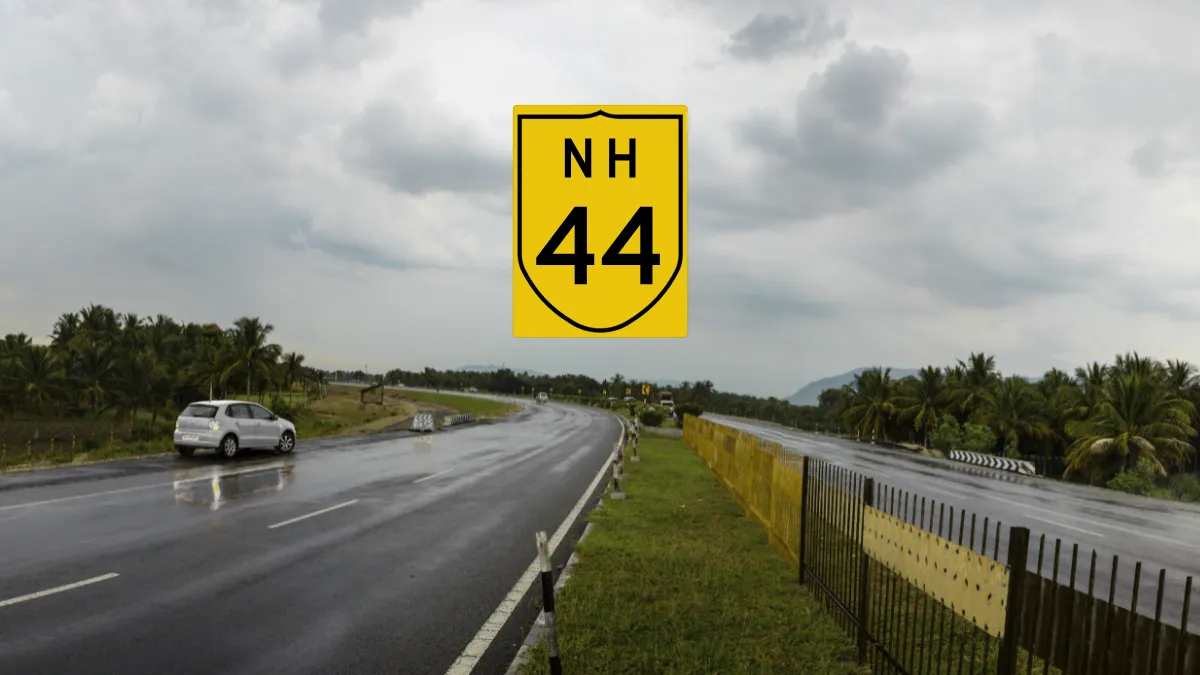NH 44 – The Lifeline Connecting Srinagar to Shambu Border
National Highway 44 (NH 44), India longest highway, serves as a vital link stretching from Srinagar in Jammu and Kashmir to the Shambu border in Punjab, near Delhi. This iconic route passes through major cities like Jammu, Pathankot, Mukerian, Jalandhar, Ludhiana, and Rajpura, covering over 600 kilometers in this segment alone.
Known for its scenic beauty and economic significance, NH 44 has long been a backbone for travel, trade, and connectivity in northern India. Recently, upgrades and developments along this stretch have sparked both excitement and debate among commuters and officials alike.
The highway journey begins in Srinagar, nestled in the Kashmir Valley, and winds through the rugged terrains of Jammu and Kashmir before entering the plains of Punjab. Along the way, it connects bustling urban centers with rural landscapes, offering a lifeline for millions of people.
With ongoing infrastructure projects aimed at improving safety and efficiency, NH-44 is undergoing a transformation that promises to reshape travel and commerce in the region. However, challenges such as delays and disruptions continue to test the patience of those who rely on this critical route.
A Route Rich in History and Purpose
NH 44 is not just a road; it’s a corridor steeped in history and strategic importance. Starting in Srinagar, the highway passes through Jammu, a city known for its religious significance and vibrant markets, before reaching Pathankot, a key junction in Punjab.
From there, it connects industrial hubs like Jalandhar and Ludhiana, which are vital to India’s manufacturing and agricultural sectors. The route concludes at the Shambu border, a gateway to Delhi, making it a crucial artery for goods and people moving between northern states and the capital.
Historically, NH 44 has played a pivotal role in linking Jammu and Kashmir with the rest of India, especially during times of conflict and peace. Its proximity to the Line of Control adds a layer of geopolitical weight, while its passage through Punjab’s fertile plains underscores its economic value.

Today, the highway supports the transport of everything from apples grown in Kashmir to textiles produced in Ludhiana, fostering trade and cultural exchange across state lines.
Upgrades Bring Hope for Smoother Travel
In recent years, the government has prioritized upgrading NH 44 to meet the demands of growing traffic and modern travel needs. For example, a significant project completed in 2024 widened sections between Jammu and Pathankot, reducing congestion and improving road safety.
The National Highways Authority of India (NHAI) has also introduced better signage, rest stops, and pavement repairs along the Ludhiana-Rajpura stretch, aiming to cut travel time and enhance driver comfort.
These improvements have been a game-changer for many commuters. Truck drivers, who once faced hours of delays due to narrow lanes and potholes, now report smoother journeys between Jalandhar and Delhi.
Additionally, the partial restoration of traffic near the Shambu border in March 2025, after a year-long blockade, has reopened this vital link, much to the relief of local businesses and travelers. Authorities continue to work on clearing remaining bottlenecks, signaling a brighter future for NH 44.
Challenges Persist Along the Way
Despite these advancements, NH 44 is not without its struggles. Landslides and heavy snowfall frequently disrupt the Srinagar-Jammu section, especially during winter months, leaving travelers stranded for days.
In early 2025, for instance, heavy rains triggered mudslides that closed parts of the highway, forcing authorities to reroute traffic and deploy emergency crews. Such incidents highlight the challenges of maintaining a road that spans diverse terrains, from mountains to plains.
Moreover, construction delays and funding issues have slowed progress on some upgrades. Commuters between the Rajpura and Shambu border often complain of uneven roads and ongoing repairs that cause unexpected detours.
Local residents and business owners, while hopeful about the highway’s potential, urge officials to speed up work and address these persistent pain points. Balancing development with the highway’s daily demands remains a complex task for the NHAI.
Economic and Social Impact on Communities
For communities along NH 44, the highway is a double-edged sword that brings both opportunities and challenges. In cities like Ludhiana and Jalandhar, improved connectivity has boosted industries by making it easier to transport goods to Delhi and beyond.
Small businesses, such as roadside dhabas and repair shops, also thrive, thanks to the steady flow of travelers passing through. For rural areas near Mukerian and Pathankot, the highway offers a link to urban markets, helping farmers sell their produce more efficiently.
On the flip side, increased traffic has raised concerns about noise pollution and safety in smaller towns. Residents near Rajpura, for example, have called for speed limits and pedestrian crossings to protect local communities from accidents.
Meanwhile, the reopening of the Shambu border has reignited debates about managing cross-border traffic and ensuring security without disrupting daily life. These issues reflect the delicate balance between progress and preservation along NH 44.
The Future of NH 44 – A Road to Prosperity?
Looking ahead, NH 44 is poised to play an even bigger role in India’s growth story. Plans to further widen the Jalandhar-Ludhiana stretch and introduce smart traffic systems could make this route a model for highway development nationwide.
Additionally, the highway’s connection to the Shambu border positions it as a key link in the Delhi-Amritsar corridor, a project aimed at enhancing trade and tourism in Punjab. If successful, these efforts could slash travel time between Srinagar and Delhi by hours, a boon for commuters and businesses alike.
However, the road to this future is not without obstacles. Environmental concerns, particularly in the fragile Himalayan region near Srinagar, require careful planning to avoid long-term damage.
Similarly, ensuring timely completion of projects will be critical to maintaining public trust. As NH 44 evolves, its ability to adapt to these challenges will determine whether it becomes a true engine of prosperity for northern India.
In conclusion, NH 44, from Srinagar to the Shambu border, is more than just a highway—it’s a thread that ties together diverse regions, cultures, and economies. With its ongoing upgrades, the route promises faster travel, safer roads, and stronger trade links, yet it faces hurdles that demand attention and action.
As India invests in this vital corridor, NH 44 stands as a testament to the power of connectivity, bridging the gap between the mountains of Kashmir and the plains of Punjab. Its journey forward will shape the lives of millions for years to come.
FAQs About NH 44
What is the route of NH 44 from Srinagar to Shambu border?
NH 44 starts in Srinagar, passes through Jammu, Pathankot, Mukerian, Jalandhar, Ludhiana, and Rajpura, and ends at the Shambu border near Delhi, covering over 600 kilometers.
Why is NH 44 important for northern India?
It connects Jammu and Kashmir with Punjab and Delhi, supporting trade, travel, and economic growth by linking industrial hubs, rural areas, and the national capital.
What upgrades have been made to NH 44 recently?
Recent upgrades include widening the Jammu-Pathankot section, improving the pavement between Ludhiana and Rajpura, and restoring traffic at the Shambu border in 2025.
What challenges does NH 44 face?
The highway faces landslides in Srinagar-Jammu, construction delays, and traffic disruptions, particularly during harsh weather and ongoing repair work.
How does NH 44 impact local communities?
It boosts trade and access to markets for businesses and farmers, but also brings challenges like noise pollution and safety concerns in towns along the route.

